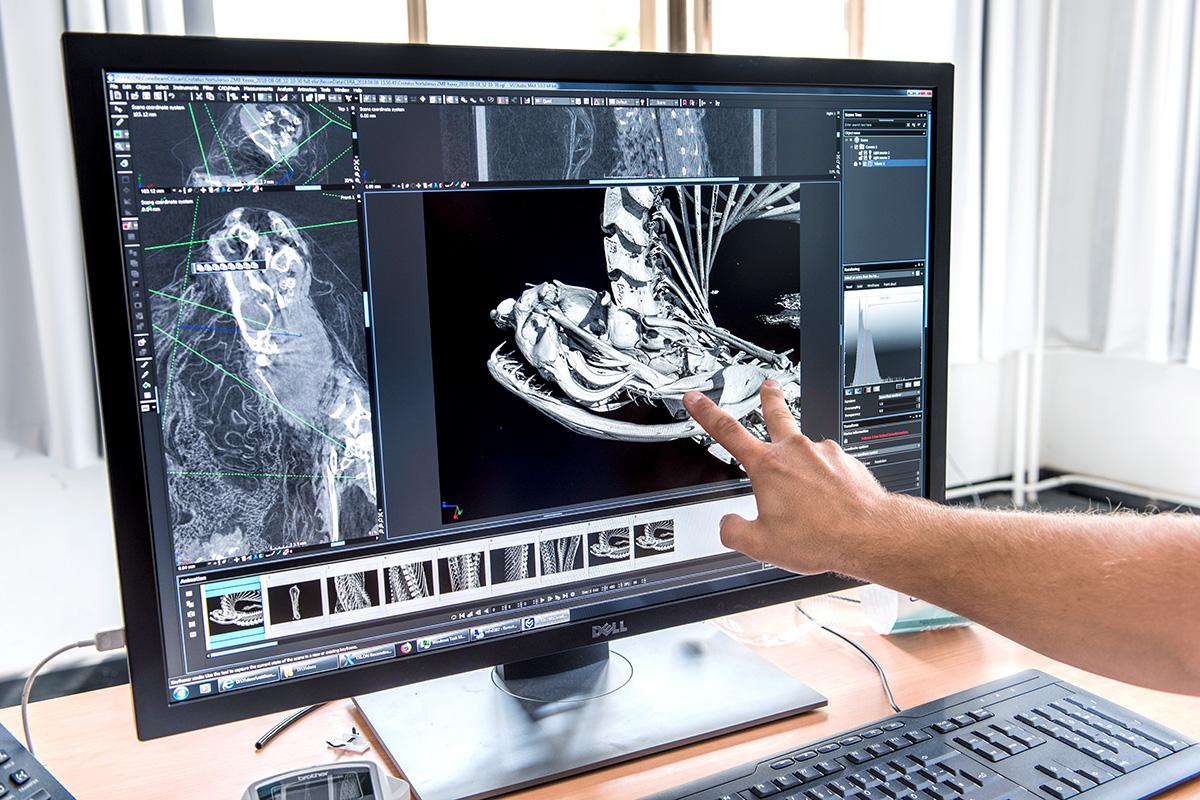The Museum für Naturkunde Berlin and YXLON International are entering into a unique industrial cooperation with the aim of adapting current 3D X-ray technology to the problems of collecting natural history collections. The computer tomograph provided can scan larger objects than previously possible - e.g. complete dinosaur vertebrae. Visitors can participate in the process and enter into daily dialogue with the scientists. This will transfer science to society as a whole.
Research and the collections are the central pillars of the Museum für Naturkunde Berlin as a research museum of the Leibniz Association, in addition to imparting knowledge. The collections are a unique cultural asset and an outstanding, internationally used research infrastructure. They comprise more than 30 million objects from zoology, palaeontology, geology and mineralogy and are of the highest scientific and historical importance.
Long-term ecological changes and large-scale processes, such as species loss and climate change, can only be investigated by accessing objects from the biological and geological past in the collections. Computer tomography offers science completely new possibilities here, because it allows detailed, three-dimensional insights into the smallest structures without destroying the objects. In addition, this technology enables rare and valuable finds to be quickly archived digitally and made available to the public worldwide. Through the secure and long-term storage, digitalisation and preservation of physical documents and information, numerous data are made available as a knowledge base for in-depth research and as pioneers of social change processes.
In order to expand the research infrastructure of the Museum für Naturkunde Berlin, the Museum and YXLON International will initially enter into a six-month cooperation. The aim of the cooperation is the joint further development of common analysis methods and workflows of 3D X-ray technology for adaptation to the problems of capturing natural history collections in single object digitisation and their multimedia presentation of results. On loan, YXLON provides a high-performance computer tomograph for research purposes (YXLON FF35 CT dual tube system). The provided device makes it possible to examine much larger objects than before, such as animal skulls, as a whole.
For the test phase of the device, the cooperation will focus on five sub-areas of the MfN's cultural heritage collections: (1) Skull and body skeletons of the mammal collection; (2) Fossil material from different rock layers with inclusions and various preservation techniques; (3) Drilling samples with mineral particles; (4) contrasted reptiles and amphibians; (5) needled insects.
Visitors can inform themselves daily during opening hours about the projects by means of a multimedia table and visit the facility. Tuesday-Friday from 1 p.m. to 4 p.m., visitors can be there live when objects are scanned and, if necessary, ask questions of the scientists.
